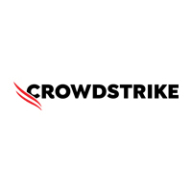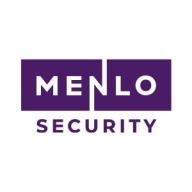

Find out what your peers are saying about CrowdStrike, Microsoft, SentinelOne and others in Extended Detection and Response (XDR).
| Product | Market Share (%) |
|---|---|
| CrowdStrike Falcon | 12.3% |
| Wazuh | 10.2% |
| Darktrace | 8.0% |
| Other | 69.5% |
| Product | Market Share (%) |
|---|---|
| Menlo Secure | 0.7% |
| Wiz Code | 34.6% |
| Seemplicity | 23.1% |
| Other | 41.599999999999994% |


| Company Size | Count |
|---|---|
| Small Business | 46 |
| Midsize Enterprise | 34 |
| Large Enterprise | 61 |
CrowdStrike Falcon offers comprehensive endpoint protection with real-time threat detection, AI-driven capabilities, and seamless integration with other platforms. Its cloud-native design provides robust security across diverse environments, making it a reliable choice for modern cybersecurity needs.
CrowdStrike Falcon is heralded for features like robust endpoint visibility, threat detection, and AI-driven capabilities. Users value its efficient real-time monitoring, which maintains low impact on performance while offering seamless integration with platforms. The lightweight design, coupled with comprehensive dashboards and automated threat responses, enhances security operations while reducing resource strain. CrowdStrike's cloud-native architecture ensures flexible, always-on protection, making it adaptable to a wide range of environments. However, improvements can be made in log management, compatibility with diverse operating systems, and integration with third-party technologies. Users also seek more robust reporting features, fewer false positives, and better support for legacy systems. Enhanced policy application, AI capabilities, and extended on-demand scanning are desired, while pricing and technical support responsiveness are concerns.
What are CrowdStrike Falcon's key features?CrowdStrike Falcon is implemented widely in industries relying on robust endpoint protection for monitoring, securing endpoints, forensic analysis, and malware detection. Its cloud-based AI capabilities ensure comprehensive security across devices, making it a preferred choice for networks, servers, and workstations globally. The efficient management of security threats and compliance with regulations is achieved with minimal resource consumption.
Menlo Security Secure Application Access
Menlo Security Secure Application Access makes zero trust access easy, giving users secure connectivity to private applications, including web and legacy applications. At the core of Secure Application Access is the Menlo Secure Cloud Browser, which fetches, secures and delivers the content for users.
In addition to providing simple-to-deploy, clientless ZTA, Secure Application Access and the Menlo Secure Cloud Browser protect applications from attacks such as session hijacking, cookie manipulation, and other tactics that employ protocol manipulation.
Secure Application Access protects applications from Internet threats and provides granular controls for added protection of the application and associated data. These security controls include Read-only/Read-write, Upload/download, Copy/paste, AV scanning, Sandboxing, and Data Loss Prevention.
Last Mile Data Protection
Menlo Last-Mile Data Protection identifies and prevents sensitive data from leaving your company by meticulously inspecting all file uploads and user input across browsing sessions. Leveraging the Secure Cloud Browser, users are protected from the internet and you can protect your organization from data loss with comprehensive traffic monitoring and controls. This approach addresses the growing concerns surrounding data leakage in the age of AI tools like ChatGPT.
By identifying sensitive data through file types, regular expressions, or predefined libraries, Menlo Last-Mile Data Protection empowers security teams to regulate data input into AI platforms and prevent unauthorized uploads. This capability provides crucial protection for intellectual property, PII, and other confidential information.
The solution leverages the Menlo Cloud Security Platform's visibility and control over traffic to reliably detect and prevent data leaks originating from both browser submission forms and non-browser traffic. With the ability to inspect encrypted web traffic, Menlo Last-Mile Data Protection enforces DLP policies consistently across all users and devices, ensuring comprehensive data protection.
We monitor all Extended Detection and Response (XDR) reviews to prevent fraudulent reviews and keep review quality high. We do not post reviews by company employees or direct competitors. We validate each review for authenticity via cross-reference with LinkedIn, and personal follow-up with the reviewer when necessary.